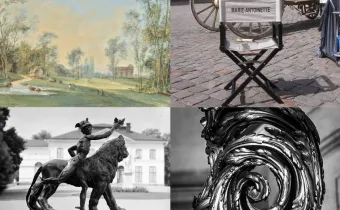A female artist
Catherine Duchemin was one of the rare few female painters working in 17th-century France and known to us today. She stands out from her fellow female artists in her achievement in being the first woman admitted to the Académie Royale de Peinture et de Sculpture on 14 April 1663 upon presenting a painting of flowers that prompted the academy to feel it was a “duty” and an “honour”, “in accordance with the King’s wishes […] to spread her grace among all those who excel in the arts of painting and sculpture […] without regard to differences between the sexes”.
Catherine Duchemin was born in 1630, the daughter of a Parisian painter and decorator who may well have taught her the basics of painting. At the age of 27 in 1657, she married the sculptor François Girardon. Despite a number of pioneering examples at the time, female artists were relatively rare in those days: it would take a further generation for their artistic careers to flourish in Paris. This first admission of a woman to the Académie was of paramount importance, serving as an event that would prompt change beyond Catherine Duchemin’s own life, as others followed in her footsteps up until the early 18th century.
A unique masterpiece
The model’s steady gaze meets the viewer’s eyes as she readies herself to begin painting a bouquet of double-flowered anemones and poppies in a vase. The format of the canvas, the opulence of the armchair, and the elegance of the colourful, black ribbon-embellished clothing are all highly ambitious.
Although the painting is unsigned, cross-referencing it with portraits from the Palace of Versailles’ collection and notably those produced by Académie members may allow for this remarkably well-executed piece to be attributed to a named artist. Catherine Duchemin may have painted the floral composition herself, which would make this portrait the only remaining example of her work. Indeed, the artist “excelled at painting flowers” to the extent that “so real were they, you might almost smell them”, according to her first biographer, Florent Le Comte. The three flowers—one budding, the other in full bloom, and the third a poppy used to symbolise slumber—may be read as an allegory for life.
Once it has been restored, this portrait will fit seamlessly in with the exceptional collection of Académie member portraits that now hang in the Louis XIV rooms. These 17th-century artworks are invaluable testimonies to how the Académie Royale de Peinture et de Sculpture would once have worked: a key component in Louis XIV’s arts promotion policy.





